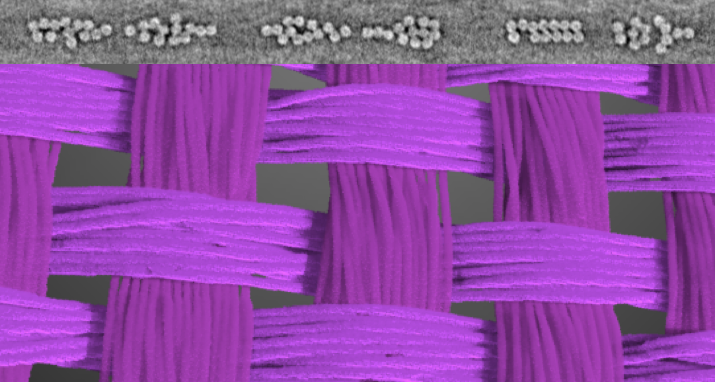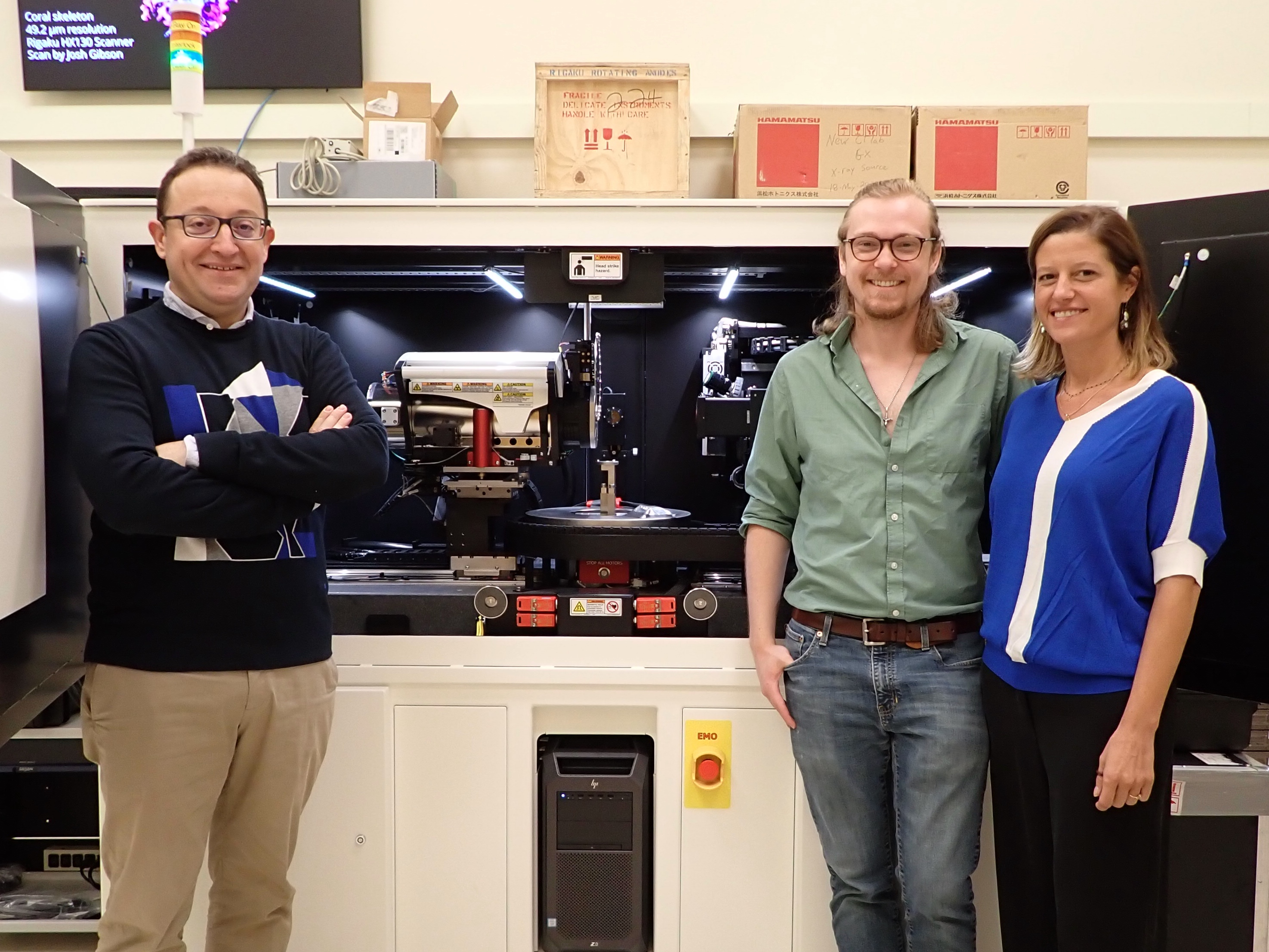Newswise — Parachutes have many applications, decelerating everything from skydivers to supersonic-speed scientific payloads. Regardless of what a parachute is slowing down, two things remain constant: the parachute must withstand large amounts of force, and it is crucial to ensuring the safety of whatever it’s carrying. To choose parachute materials that do their jobs effectively, it’s important to fully understand what happens while a parachute is opening and on its way down.
Beckman Institute for Advanced Science and Technology researchers Cutler Phillippe, and used computed tomography scans to study the fiber-scale properties of parachute textiles and link them to larger-scale behavior. Their work is published in the .
“We know generally how a textile impacts the performance of the parachute,” said Phillippe, a graduate student in the Department of Aerospace Engineering at the University of Illinois Urbana-Champaign. “But we don’t know from an experimental standpoint how that performance is related to the individual fiber motions within the textile as well as the dynamic properties of, for example, a bundle of fibers.”
If the parachute’s performance — how it behaves in the sky — is considered the macro scale, a bundle of fibers is the mesoscale and an individual fiber represents the microscale, the researchers said.
The researchers aimed to quantify what was going on at those smaller scales and link that behavior to the forces and interactions happening on the larger scale. This provides data for computational modelers simulating how untested parachute behaviors might behave, and could inform them of new phenomena.
The researchers used a micro-CT scanner at Beckman to image two parachute textiles under increasing stress levels. Like a hospital CT scanner, micro-CT scanners use X-rays to image 2D slices of a material. These slices visualize the material’s 3D structure when put together.
The group loaded their parachute samples into an instrument called a tensile tester, which allowed them to incrementally increase the force on their textile samples. At each new level of force, micro-CT scans were taken while the samples were kept under stress.
Tensile testing showed the researchers how the fibers responded to different levels of stress: how they stretched, straightened and reorganized with increasing loads. When the bundles of fibers changed shape, the pores between them also widened, which would alter how air flows through and around the parachute.
When textiles have the same number of the same type of fibers going both directions — up and down versus left and right in the material — the textile is expected to be isotropic. This means that it has the same properties in both directions. For example, applying a force along the vertical axis would be expected to result in the same amount of stress and deformation in the material as if the force were applied along the horizontal axis.
However, the researchers observed the opposite: the textiles had different properties in different directions. During weaving, the fibers running in one direction — called the warp — are held in tension on a loom, while the fibers running perpendicular to them — called the weft — are slid in between the first set of fibers. Even after the textile is removed from the loom, the differences in tension during the manufacturing process result in it not being isotropic. Specifically, the fabric is more resistant to being stretched in the direction of the warp fibers.
Understanding this difference can inform processes like parachute assembly. Parachutes are made of different textile pieces that are attached to each other, and the orientation of these pieces influences properties of the overall parachute.
Choosing the best parachute materials is crucial for safety and mission goals. This research informs models which will be used to identify promising candidate textiles.
“Computationalist work is very good at recreating things that have been done,” Phillippe said, “but it’s not quite to the deployment phase (pun intended) of being able to say, ‘Okay, I’ve modeled this new textile and I can definitively tell you that it is or is not worth the cost to make a prototype.’”
Improving models for screening parachute materials makes parachute industries and applications more cost-effective and time-efficient. In addition to scientific missions, this work can be applied to parachutes in other settings: for instance, use in relief efforts or in recreation.
Phillippe presented his work at a symposium about the interactions between fluids and structures, where he met with NASA computationalists and other programmers who incorporate research like his into their models.
“A lot of the time, there’s a slight disconnect in communication between what computationalists need and what experimentalists think that they need, and you end up not completing the full picture,” Phillippe said. “Getting to know everyone and becoming informed on their wants and needs was very inspiring. It really helped to frame what I need to do moving forward from this work.”
Phillippe to continue this research. He is currently using microscopy imaging to better understand how textile pores impact airflow and imaging textiles with flow passing through them to visualize the 3D deformation.
Editor's notes:
The publication titled "In situ imaging of parachute textile micromechanics under tensile load" can be accessed online at .
Please consult the publication for full author information.
Media contact: Jenna Kurtzweil, [email protected].
MEDIA CONTACT
Register for reporter access to contact detailsArticle Multimedia

Credit: Credit: Lauren Otolski, Beckman Communications Office.
Caption: Cutler Phillippe and Laura VillafaƱe Roca work with the micro-CT scanner.

Credit: Credit: Cutler Phillippe, Department of Aerospace Engineering.
Caption: Top: A cross-section view of a parachute textile, taken with a micro-CT scanner. Bottom: A 3D rendering of one of the two textiles imaged in the study.

Credit: Credit: Lauren Otolski, Beckman Communications Office.
Caption: Francesco Panerai (left), Cutler Phillippe (center) and Laura VillafaƱe Roca in front of the micro-CT scanner at the Beckman Institute.
CITATIONS
